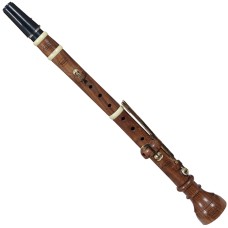Piccolo Clarinets

We are recrafting these small clarinets shown below with care and precision, allowing players to perform 18th-19th century music with ease.
The definition of a small clarinet is: a clarinet built in a higher pitch than the soprano C clarinet. These include (from highest to lowest pitches): C, Bb, A, Ab, G, Gb, F, E, Eb, D, and Db. The most common pitches are Eb, D, F, and Ab. As a group, small clarinets are called piccolo (in Italian), petite (in French), and kleine (in German).
The following is a list of small clarinets grouped by their relative size, from smallest to largest, with brief comments about how and where they were played:
- C: Mid-nineteenth century in Italy, mainly wind bands.
- Bb: Late eighteenth to mid-nineteenth centuries, wind bands in France.
- A: Early nineteenth century.
- Ab: From the early nineteenth century, chiefy military, especially in Hungary and Italy, also twenty-first century clarinet choirs
- G: Late eighteenth to mid-nineteenth centuries, especially in Austria
- Gb: Mid-nineteenth century, military bands in Italy.
- F: Early eighteenth to early nineteenth centuries, widespread military use.
- E: Mid-eighteenth to mid-nineteenth centuries.
- Eb: Late eighteenth century, replacing clarinet in F in military bands, orchestras, chamber music
- D: Early eighteenth and nineteenth centuries, in orchestras, military bands and ballet orchestras.
- Db: Mid-nineteenth century, in English and Italian bands paired with the Bb clarinet.
Small Clarinet D (Re) - Piccolo - George Astor
The small clarinet in D was played in La Borde’s opera Gilles garçon peintre, z’amoureux-t-et-..
$750.00
Small Clarinet Eb (Mib) - Piccolo - J.H. Ebble White
The earliest mention of this small clarinet in Eb is by Jean Benjamin de La Borde in his Essai sur l..
$750.00
Showing 1 to 2 of 2 (1 Pages)

